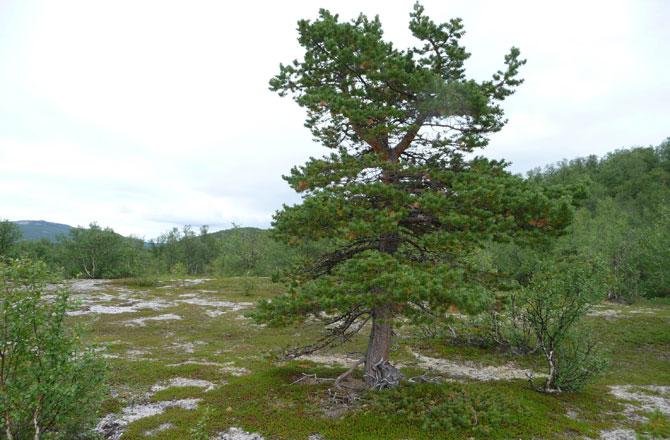Trees and shrubs, like this young pine in Norway's Finnmark, are taking hold in what was once frozen tundra.(Hans Tommervik)
The study, conducted by an international team of 21 researchers from 17 institutions in 7 countries and funded by NASA, appeared in the journal Nature Climate Change on March 10.
Professor Bruce Forbes from the Arctic Centre of the University of Lapland in Rovaniemi, Finland, one of the authors, says "we are seeing more frequent and longer-lasting high pressure systems. In winter, the snow cover comes later, is deeper on average than in the 1960s, but is melting out earlier in spring."
"Arctic plant growth during the early 1980s reference period equaled that of lands north of 64 degrees north. Today, just 30 years later, it equals that of lands above 57 degrees north — a reduction in vegetation seasonality of about seven degrees south in latitude," says co-author Prof. Terry Chapin, Professor Emeritus, University of Alaska, Fairbanks. The change equates to a distance of approximately 480 miles.
“In a few decades, if the current trends continue, much more of the existing low shrub tundra will start to resemble woodlands as the shrubs become tree-sized”, says Forbes.
Northern Boreal forest species are adapted to cold. “Some areas of boreal forest will be negatively impacted by warming temperatures, from increased drought stress as well as insect and fire disturbance”, says Scott Goetz of Woods Hole Research Center in the US, another of the co-authors.
Although many climate studies can be argued, increasing deciduous growth creeping further north shows temperatures are staying warm enough to support vegetation in what was once frozen tundra.







